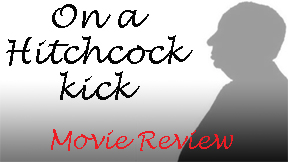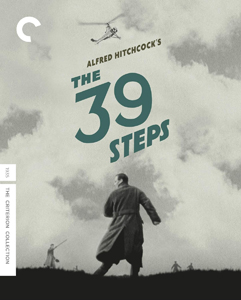“The 39 Steps” (1935) is one of Alfred Hitchcock’s foundational works, a crisp, mildly diverting story about an innocent man on the run. It’s limited by the film technology of the time and place – this is five years before he’d move from Britain to Hollywood – but despite the limited toolbox, it’s the work of an artistic craftsman.
Among his famous later films, the lightly comedic action romp “North by Northwest” (1959) is a close parallel. While it’s not exactly hilarious that Hannay (Robert Donat) gets swept up in a spy game after a woman is murdered in his London flat, the film is filled with smirky moments as he’s swept throughout the U.K.
The narrative is so brisk that we don’t have time to be angry on Hannay’s behalf as he’s targeted by a Scotland-based military-secrets-stealing operation called the 39 Steps, pursued by authorities who aren’t interested in digging deeper, and doubted by a tattle-telling woman also swept into the fray, Pamela (Madeleine Carroll).

“The 39 Steps” (1935)
Director: Alfred Hitchcock
Writers: Charles Bennett (screenplay), John Buchan (novel)
Stars: Robert Donat, Madeleine Carroll, Lucie Mannheim
For one stretch, although it’s not as much of the 86-minute movie as you might assume, Hannay and Pamela are handcuffed to each other. They exchange banter and scowls as they must take a hotel room together and sleep on the same bed.
If it was allowed at the time, Hitch might’ve added more inuendo or outright sex appeal to this sequence. The film would be remade in 1959, 1978 and 2008, and I’d bet those versions take advantage of more relaxed morals. (All are lower-rated on IMDb than the original’s 7.6, of course.)
A timeless template
Hitchcock trademarks are on display not only with the spy plot, but with the set pieces, like when Hannay evades cops by switching train compartments by climbing outside the train. In 1936, it was hard to do a complex action shot outside a soundstage – and Hitchcock famously disliked any shot he couldn’t totally control – so “39 Steps” isn’t an action film. But a viewer senses Hitchcock would like to make one someday, and many steps later we got “North by Northwest.”
Similar to that later beloved film, the lead character takes things in stride, almost as if he knows he’s in a movie where events will somehow work in his favor. The charming Donat finds the right tone so we feel mild suspense in his escapes and can laugh at his improvisations. In the wildest case of mistaken identity (within this wider plot where he’s mistaken as a murderer), he gives an impromptu town-hall speech for a Scottish political candidate.
“The 39 Steps” doesn’t have a lot of “of its time” commentary, aside from the notion that cities are fun and country life is stark — as illustrated when he stays overnight with a farm couple, the wife betraying her longing for adventure.

That actually makes the film a timeless, placeless template, though. I like it more than “The Lady Vanishes” (1938), for instance, which gets bogged down in international conflicts. In “The 39 Steps,” the maguffin of the stolen military plans very much stays a maguffin. Heck, we don’t even find out why the enemy spy organization is called by its odd name.
Hitchcock will make better versions of this type of film once he gets to America and has more money and tools, and (slightly) fewer censors to placate. But the pacing, performances and comedy-drama mix are in place, and “The 39 Steps” is rightly cited as one of Hitchcock’s elite British films.
RFMC’s Alfred Hitchcock series reviews works by the Master of Suspense, plus remakes and source material. Click here to visit our Hitchcock Zone.

